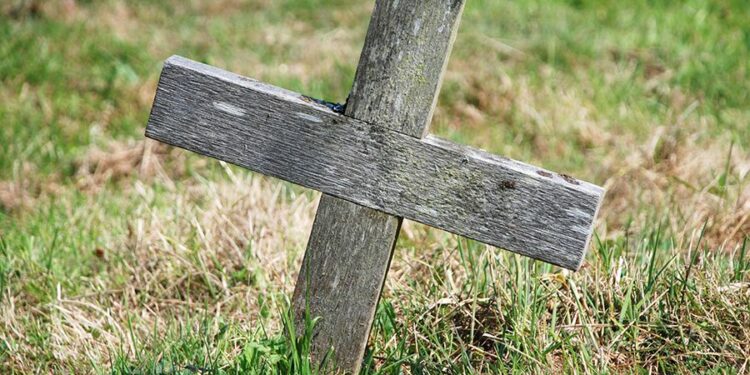Perhaps the most notable difference in green burials is the absence of embalming fluid in the preparation process. The vast majority of burials in the U.S. include embalming, in which the body is preserved using numerous chemicals to allow for viewings and wakes. The practice became widely used during and after the U.S. Civil War.
In addition to the lack of embalming, Handel said, a green burial casket is a relatively simple receptacle. The body is “placed in, for lack of a better term, a plain pine box,” he said. “There’s nothing artificial — no metal, no varnish — so that it naturally decomposes.”
“Instead of six feet deep, the burial is actually done in the three- to four-foot-deep range, because that’s optimal for body decomposition,” he said.
The lack of a concrete vault in green burials, Handel said, does present some structural challenges. A vault “keeps the grave from caving in when the casket breaks down,” he said.
“With green burial there is no vault,” he noted. “Obviously in those areas there will be more backfill required as time goes on, because the body will decompose and the casket will cave in.”
The Roanoke facility isn’t the only Catholic green burial option in the state: Several years ago Holy Cross Abbey in Berryville began offering green burials.
The abbey on its website says that, in its green burial process, “the body [is not] embalmed,” the casket is not made of metal, and there is no concrete vault.
Graves, meanwhile, “are marked with simple engraved stones obtained from these same sacred grounds.”
Not all green burial methods ‘manifest respect’
Other environmentally friendly forms of burial have been the subject of debate in recent years, and the Church has declared some of them unsuitable for Catholics.
Some environmental advocates have argued that “human composting” offers a solution to resource-intensive burials. In that practice, a human body is placed inside a reusable container where deliberately seeded microbes and bacteria break it down into soil.
(Story continues below)
Subscribe to our daily newsletter
The U.S. Conference of Catholic Bishops last year said that human composting, along with the chemical-based process of alkaline hydrolysis, “pose serious problems in that they fail to manifest the respect for last remains that Catholic faith requires.”
Green burials, in contrast, are permitted by the Catholic Church, Handel said, reiterating that the practice is perfectly in line with Church teaching.
“From the Catholic perspective, I don’t see why we shouldn’t promote green burial,” he said, “because it goes back to our tradition that the preferred method of disposition at the end of your life is a full body burial, not cremation.”
Vail echoed those remarks, calling green burials “the original form of burial.”
“The final act in the Catholic rites of burial is the committal in consecrated ground,” she said. “Therefore, this type of burial is in line with Catholic teaching.”
Credit: Source link




